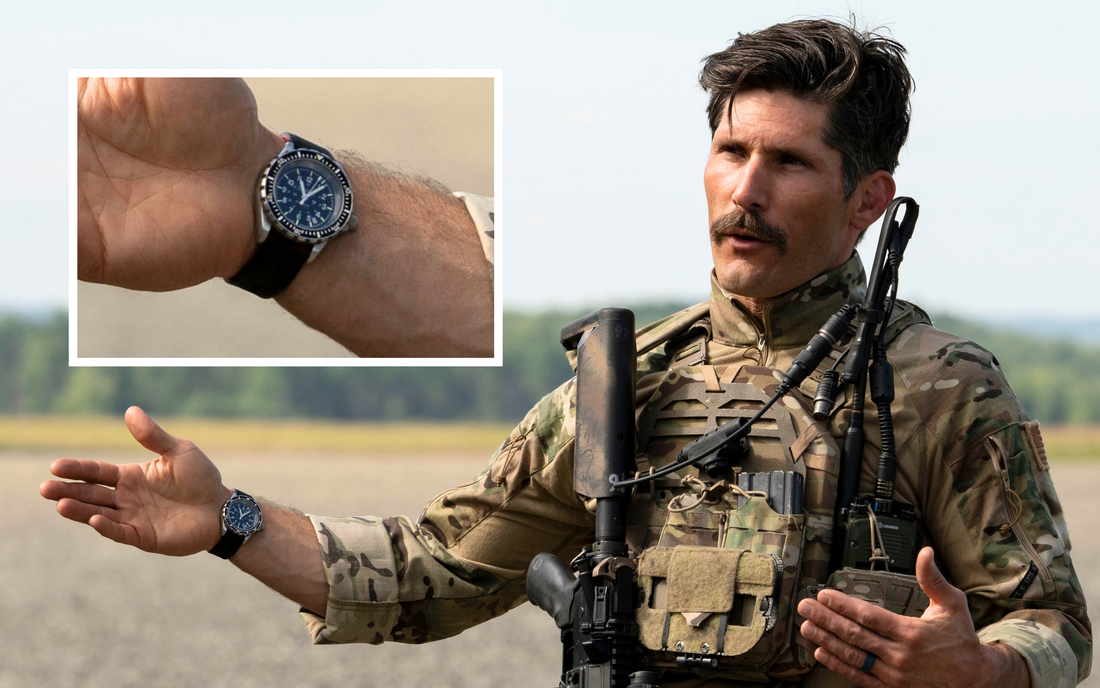And Why You Probably Shouldn’t
Look at photos from any conflict over the past 50 years and you are bound to see uniformed US military personnel wearing a wristwatch on the inside of their wrist. While it’s difficult to pinpoint when exactly this tradition began, Vietnam-era Green Beret and MACV-SOG operator John Stryker Meyer AKA “Tilt” told us it was a habit he picked up in Special Forces training in the 1960s.
The practice of wearing a watch on the inside of the wrist has several functional benefits in a tactical environment, including protecting the glass/crystal from damage, preventing glare or reflections, and ensuring the watch is legible while operating a weapons system or lying prone.
That said, I would argue today “inside-wristing” is just as much about culture as anything else. A watch is one of the few items customizable by uniformed personnel and for some it is a sign that you are a “gunfighter”, “operator” or play Call of Duty on the weekends.

NSW operators train Hellenic special operations forces in 2024.
First, let's explore some of the legitimate reasons why military personnel wear watches on the inside of the wrist.
To Negate Reflection: Managing one's profile—how easily you are seen or discovered—is a key part of any military operation. Camouflage is the most obvious example, but something as small as a glare or reflection of a wristwatch in a sniper hide or while moving to target could compromise an operation. There are few reflective things in nature and a trained observer is always looking for something abnormal. Wearing the watch on the inside of the wrist reduces this risk.

Delta Force member with Suunto compass/watch combo, the watch on the inside of the wrist.
Light Signature Management: In a tactical environment, a watch's nighttime legibility is essential. Most analog military watches incorporate luminous phosphorescent “lume” on the dial and hands and Digital Tool Watches (D.T.W.s) have a push button illumination function. “Light discipline” is a part of signature management in low light/no light scenarios, and the lume can pose a potential vulnerability, especially with dive watches that are designed for underwater legibility.
Tritium, a radioactive isotope commonly used in military watches, is particularly visible through Night Vision Goggles and scopes. Again, wearing the watch on the inside of the wrist diverts the light towards the individual vs towards the enemy, potentially reducing your signature.

Modern dive watches like the Tudor FXD offer significant illumination, which is ideal for diving but not for combat. (Photo Credit: W.O.E./James Rupley)
Of note, over time military members have used several other methods to mitigate the reflection and light emissions, including a simple watch cover, with Vietnam Era Navy SEALs fashioning snap-in rivets to attach a thin leather watch cover.
In the African bush wars, this was also common and served the additional purpose of protecting the watch against harsh environments and thorns.

Legendary SEAL Barry Enoch wears a Tudor Submariner with a custom leather cover intended to limit reflections.
Running The Gun: One of the most common reasons people point to for wearing the watch inside the wrist is that it is easier to check the time when weapons handling during combat and/or Close Quarters Battle (CQB). The idea is that with the watch on your support hand extended on the rifle, the time is visible without canting or adjusting your wrist. While I wonder how often someone really checks the time during a gunfight, this theory likely has validity for those with extended periods lying prone and/or in a sniper hide where movement could give up your position.

10th Special Forces Group conducting CQB training.
Additionally, some former SOF members I spoke with explained that wearing the watch inside the wrist makes it easier to check the time with bulky gloves and prevents grinding the watch into the wrist during push-ups and obstacle course runs.
Cool Guy Fashion: Despite the many legitimate reasons for practitioners to wear watches on the inside of the wrist, I would argue that for many it boils down to culture and personal expression. “Tacticool” fashion, whether Merrell shoes, 5.11 pants, Oakleys or beards, and American Flag baseball hats, generally starts with SOF units, born out of utility. It is then picked up by the “regular” military and ultimately filters down to pop culture, civilians, and weekend warriors.

SEAL Team TV Show.
Why You Shouldn't “Inside Wrist”
As a former CIA Case Officer, I generally avoid anything that is tacticool. While it may be a practical application for law enforcement, SpecOps, and uniformed military personnel, a black Digital Tool Watch on the inside of your wrist is a clear “tell,” a signal to others that one is a “quiet professional-gray man.” For Case Officers, who mostly operate in capital cities while undercover (i.e. posing as something they aren’t) this watch can make one stick out as much as a gold Rolex Daytona.
That said, at the end of the day you should enjoy this hobby in any way you see fit. If you want to LARP as a Navy SEAL, LARP on.
If you enjoyed this article, please consider signing up for our weekly free newsletter for further updates HERE.
Read Next: DARPA’s Take on the Next Generation of Military Watches









33 comments
I was a kid in the late 60s and 70s and remember seeing a lot of guys who wore their watches on the inside of their wrists. My guess is that it was a holdover from guys who’d served in the military during WW II and Korea?
I wore my watch on the inside of my wrist because the crown would always snag on the uniform blouse. I was never cool or high speed; I simply have small wrists and even 41-42mm dwarf my frame.
Wearing a watch on the ‘inside’ if the wrist used to be common with physicians and nurses. Small correction – based on the anatomic position, that is the ‘front’ of the wrist, not the ‘inside’.
Pedantics aside, wearing a watch on the front of the wrist allowed you to take a patient’s pulse using your index or long finger on their wrist, and you could still see the seconds hand. I did find that the crystal took more abuse than wearing the watch in a more conventional manner.
Now, there are automated devices to measure pulse rates, so the front facing watch wearing is rarely seen. Sadly, watches in general are rarely seen.
I used to wear it one the inside occasionally depending on what I was doing when I was in but another guy in a customer service industry said that he wore his inside so he could keep track of time without making the customer feel that they were feeling rushed though whatever they were working on.
I rarely wear any watch ‘inside’ but if I am in a place where I don’t want a nice watch to be especially visible, I will flip it around on the fly. Gas stations, mini marts… places where a nice watch can make you a target. Mainly for brand stealth… Great article, as usual. And I love my Rhodesian leather cover for my old SandY. Very Hardy Kruger! ;-) But that’s all about style… not about ‘operating.’